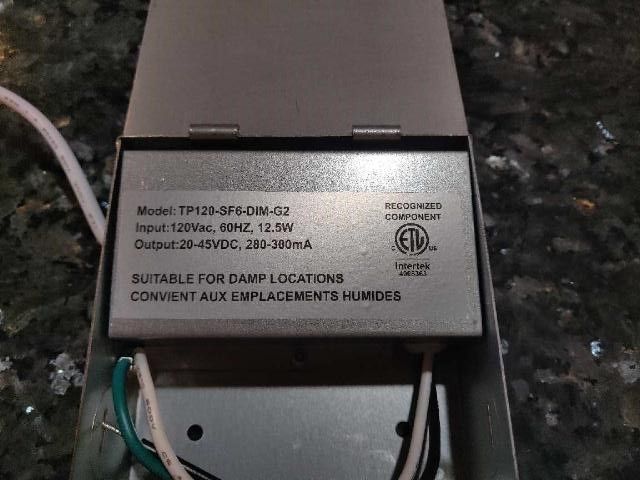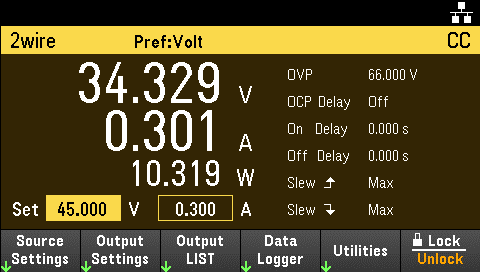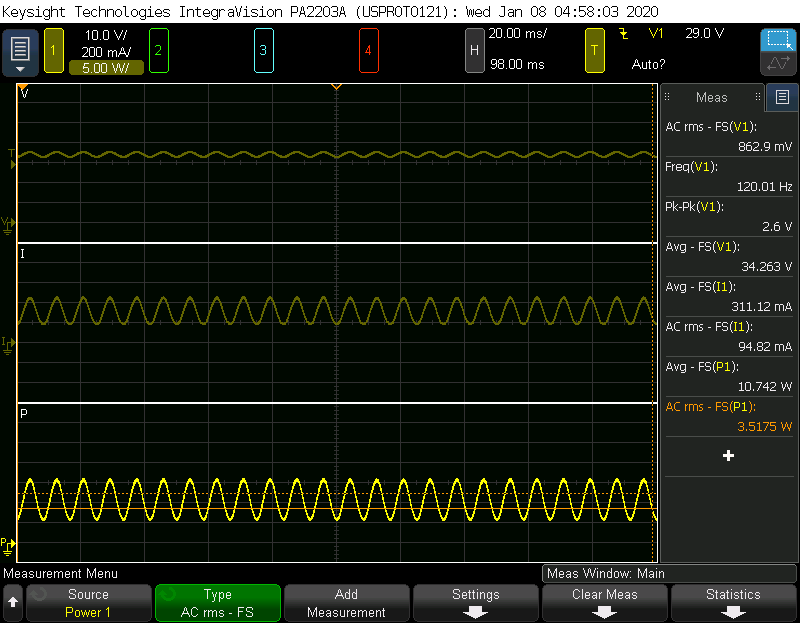
Using a Bench Power Supply to Power and Measure a Constant Current Load
Constant current (CC) sources are all around us, a common example is an LED driver. LED lamps have several advantages, including lower heat, smaller size, and lower power consumption. The retrofit surface-mount light shown in Figure 1 takes advantage of these LED properties, creating a low-cost solution to traditional in-ceiling can lights. Since the LED produces very little heat, it does not require the installation of a metal can and instead has a low-cost plastic shell.

Figure 1. Six-inch surface-mount LED
The LED driver (Figure 2) provides a significant hint that it is a CC source. The driver specifies an output of 20 to 45 V and 280 to 300 mA. Because of the wide voltage spec and narrow current specification, we can be reasonably certain that it is a CC driver. A bench power supply can safely test this light and measure the actual power consumption. The key to avoiding damage in this test is to configure the power supply such that it does not apply too much power. Merely adjusting the voltage setting on the power supply could destroy the light — you must also restrict current using a power supply with a CC mode.
To test a CC load with a bench power supply, you must set a current limit. In this case, a 300 mA limit is a safe choice (the maximum milliamp output of the driver). Then choose a voltage high enough that the power supply will switch to CC mode. A Keysight E36232A bench power supply powers the light as it can output up to 60 V. Since the driver outputs 45 V with no load, the power supply is set to 45 V.

Figure 2. LED driver with an output of 20 to 45 V, 280 to 300 mA
In Figure 3, the power supply is set up with a 300 mA current limit and 45 V output. The power supply operates in CC mode. The actual output voltage is 34.3 V, and the current is 300 mA. Calculate power consumption by multiplying the output voltage and current at full power: (34.3 V * 0.3 A) = 10.3 W.

Figure 3. Bench power supply operating in CC mode
Power Consumption When Using an LED Driver
It is much easier to determine the power usage of the LED lamp using a DC power supply than using the LED driver. The LED driver has a significant ripple and does not regulate the current as well as a bench power supply. Figure 4 shows the voltage and current produced by the LED driver. A power analyzer with full-screen averaging provides consistent measurements.

Figure 4. A power analyzer shows the voltage (top), current (middle), and total power (bottom)
The LED driver supplies an average of 311 mA, which is 4% higher than the specified 300 mA and causes a proportional higher power consumption.
AC Component Effects
The waveforms captured in Figure 4 show that the LED driver outputs, a ripple, an AC component along with the DC current. The AC component causes the LED to flash 120 times per second, which is much faster than the human eye can observe.
- Upper peak is 460 mA and 16.4 W.
- Lower peak is 180 mA and 5.7 W.
Want to learn more about using a power supply in constant mode? Check out 4 Ways to Build Your Power Supply Skill Set.